 |
 |
 |
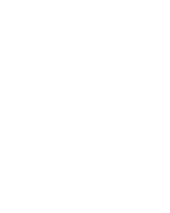
|
Motif de tatouage sur un buste feminine
|
|
 |
Tatoueurs-Tatoués
EDITORIAL BY STÉPHANE MARTIN
In 2010, a study conducted by the Institut Français de l’Opinion Publique [IFOP] revealed that one in ten French people were tattooed, and one in five in the 25-34 age group. In the United States this proportion is constantly increasing, with almost a quarter of the population wearing tattoos today, based on a 2012 Harris poll. The ever-growing practice of tattooing has been nothing less than a craze since the 1990s and 2000s. Fashion, design, advertising and the media have all been quick to appropriate the “tattoo phenomenon”, and we have lost count of the number of stars who have given in to it. In museums, its presence can also be noted. From the Australian Museum to the Dapper Museum, it holds pride of place in many exhibitions. For Ellen Futter, President of the National Museum in New York, the reason for this success has to do with the fact that “there is no known culture which does not practice tattooing, be it permanent or temporary”.
|

|
Posted 27 November 2014
|
Share this:
|
|
So it is present in all societies, but its existence is hardly recent. Ötzi - whose carbon-14 dating suggests that he lived around 3000 BCE - was discovered with his body decorated with 57 tattoos. H.G. Wells, for his part, observed that “in all times, for as far as prehistory goes back, there were human beings who painted themselves, or had themselves painted”. Despite this remarkable longevity, tattooing underwent different fortunes in the collective imagination. In Europe, it was once regarded as a sign of social exclusion, evidence of a marginal life. In Asia its presence referred to the criminal underworld, while it was a mark of social prestige among the people of Oceania.
|
|
|
|
|
|
The emergence of new technologies and an ever more accessible world would help tattooing enjoy a second artistic life. With the circulation of information, exchanges between tattooers have thrived and we were soon seeing new lines of designs. In tandem, tattooing techniques have been evolving and bodies are currently being offered in their full dimension. In every corner of the planet, there are now renowned tattoo artists, actual artistic currents and works boasting undeniable aesthetic qualities.
So it is with the aim of showing the public the entire contemporary and aesthetic range of tattoos that the musée du quai Branly has wished to devote a show to this practice. Titled “TATTOO”, it will propose 5 circuits for the public, retracing the ancient nature, ubiquity and diversity of forms of tattooing as well as the wealth and aesthetic quality of contemporary works. The sets and scenery are the work of Réza Azard, museographic designer for the Guadalajara Guggenheim, in Mexico, and set designer for many shows held at the musée du quai Branly, such as PLANÈTE MÉTISSE, DOGON and LE SIÈCLE DU JAZZ.
This exhibition has been designed by Anne & Julien, founders of the art magazine HEY! Modern art & pop culture, journalists, authors, documentary film-makers and exhibition curators, to whom I would like to express my heartfelt gratitude for the originality of the work done and the quality of the works on view.
I would also like to warmly thank Tin-tin, president of the national union of tattoo artists, recognized by his peers as one of the best master-tattooers in France, for having given us his artistic advice.
Warm thanks must also go to the project’s 2 scientific advisors, the journalist Pascal Bagot, author and director of the documentary La Voie de l’encre, and Sébastien Galliot, Labex CAP postdoctoral researcher, specializing in the fields of the anthropology of rituals, the anthropology of art and technologies, and the ethnology of tattooing in the Samoan community. Last of all, let me invite visitors to discover this show in large numbers, a show which will enable you
to see tattoos in a new light.
Stéphane Martin, Président of the Musée du Quai Branly
|
|
|
back to top
EDITORIAL BY ANNE & JULIEN, CURATORS OF THE EXHIBITION
The lure of tattoos often starts with a childhood memory, a glimpse of an arm with the shirt sleeve rolled up, the face of a Berber woman encountered in the neighbourhood, someone just out of prison thinking of his mother, a rascal’s doe eyes… At the dawn of the 1970s, in our suburbs, tattoos were there, in hiding… But we looked at them. At the dawn of the 1990s, obsessed by sound and imagery, we became gallery owners, journalists and activists. Then we became tattooed. At the service of a strange and remarkable medium that reflects who we are. The exact opposite of sophisticated, mainstream art. Tattooing as a bridgehead. With the creation of our art magazine HEY! Modern art & pop culture in 2010, we are still looking at tattoos. Yesterday a rallying of outsider spirits refusing to swallow any one-sided societal plans, tattooing was a milieu with a far-reaching eccentricity, where street smarts forced experience—and experiment. There was an incredible kaleidoscope of individualities gathered around a practice that defied sweeping generalization; nothing could make it swerve from its path. Now, restricted by the growth of the media giving tattooing over-exposure, it is writing its own modern history in pace with the perfecting of new technologies. As a result, the subject is today being talked about everywhere, and accepted by many. But on what bases?
So, little by little, tattooing abandoned the exclusively traditional, craftsman-like arena and started to question the subject and its interpretation. With motifs suited to the occasion being systematically imposed and proposed in tattoo shops and parlours, the tattooer nowadays indulges in free figures. In this art, the shift is fundamental—it frees “the hand” from the mechanical repetition to which it was confined—and gives glimpses of an unexplored territory where the imagination can become the driving force, the matrix.
The choices of “TATTOO” force an abandonment of scientific observation in order to penetrate “the artistic juices”, and celebrate the creative, living, moving dimension of the tattoo. Alongside the transcription of things ancient, and of the ubiquity and diversity of tattooing practices throughout the world, and presented for millennia by way of rare artefacts, the exhibition pays tribute to the pioneers of the modern era—the “heroes” responsible for the changes the tattoo has undergone.
And since this artistic trend is one of the most dynamic of our day and age, we have elected to let its early representatives have their say—the tattooers, those guardians of the temple. Following this rationale, two kinds of studio works have been produced for the show. First, 13 volumes, 13 “excerpts” of bodies, imprints cast on live models, where the experimental material has been exclusively developed for the occasion with Atelier 69, then tested and validated by a representative of the confraternity, the French tattooer Tin-tin. 13 surfaces which 13 tattooers have inked, in the strict exercise of their art.
By machine, or using traditional tools, based on their daily practice. To create a tattoo within a tattoo, virgin canvases were given to 20 other tattooers, for the so-called classic application of the “body suit”. In tattooing, creating your “body suit” with ink, acrylic, water colour, graphite, felttip […] is a wager. Among the tattooers, all the active continents are represented (Europe, America, Asia and Oceania). Lastly, a totally novel series of photographs presents the 2 most recent trends in modern tattooing, a locker-room of graphic aesthetics which anchors the third millennium.
We know that this exhibition is bold. This is a deliberate choice. Its intent is to link up with the tremendous energy flow that is shaking the present-day movement. A huge thank you to the musée du quai Branly (The Museum of Indigenous Arts) (and to Stéphane Martin and all his teams), for having understood our approach, supported it, and opened the doors to the museum’s amazing collections for us. A huge thank you to Tin-tin for his solidarity and know-how. A big thank you, too, to Loretta, and Titine and Filip Leu for their freedom, open-mindedness, and bottomless generosity.
Without all these people, nothing would have been possible.
|

|

|

|
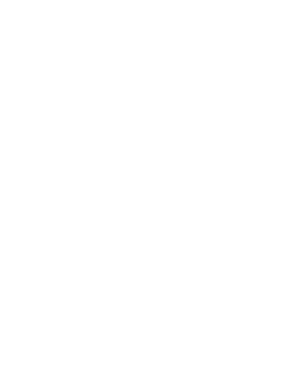
La dernière femme Kalinga tatouée
|
|
TATTOO explores the world of tattooing and offers a unique approach to this ancestral practice, presenting 300 historical and contemporary works from a variety of
countries. For the first time, an exhibition presents the artistic dimension of tattooing and its history throughout human culture from its first appearance. The musée du quai
Branly reflects the growing interest given in our contemporary societies to this art, which is both a subject of fascination and of identity.
While tattooing has a rich technical and aesthetic history, which has already been thoroughly studied and represented, tattooists and the tattooed act as spokespeople for the art on a daily basis. For the first time, a major exhibition is dedicated to tattooing as an artistic medium, paying homage to the contemporary pioneers; these artists who have developed the art of tattooing but whose role has never been sufficiently appreciated. For the event, the exhibition's curators, Anne & Julien, have employed an extensive network to unite artworks by the most important tattooartists.
|
|
|
|
|

|

|

|
Chosen from the foremost representatives of contemporary tattooing, 30 master tattooers from across the world - Tin-tin (French tattoo artist), Horiyoshi III (Japanese tattoo artist), Filip Leu (Swiss tattoo artist), Jack Rudy (American tattoo artist), Xed LeHead (British tattoo artist), Chimé (Polynesian tattoo artist) - have produced for the exhibition two types of work; future tattoo projects or fantasy projects. Using an electric machine or traditional tools, they have drawn their planned project onto canvas or tattooed silicone forms.
The exhibition presents silicone "body extracts", providing examples of tattoos on legs, torsos and arms. The shapes were modelled from living models.
The experimental material was developed for the event with a specialist special effects workshop, then tested and validated by the French tattooist Tin-tin.
A total of 13 forms were "pricked" by the tattooists, using machines or traditional tools, using their everyday methods and as if they were working on real skin. Also presented are 19 body-suits; tattoo designs painted onto kakemonos by tattooists who combine a profound respect for the rules of their art with resolutely modern inspiration and the desire to present genuine uniqueness in their work.
The volumes and body-suits act as a contemporary thread running through the exhibition, highlighting the networks of influence in tattooing throughout the world.
The last woman tattooed Kalinga.
|
|
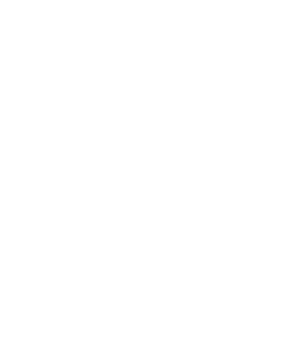
Motif de tatouage sur une jambe feminine
|
|
|
|
|
|
Tattooing owes its name to the Polynesian tatau observed by Captain Cook’s crew in the 18th century. The evolution of this practice has resulted from exchanges between countries, between dominant and marginal trends, between centres and fringes. Overexposed by the media, tattooing is writing its contemporary history to the rhythm of technological improvements. The exhibition follows tattooers and tattooed across periods and continents, tracing the encounters that have made tattooing an artistic form and a worldwide phenomenon. The practice, omnipresent in times gone by as a ritualizing marker in traditional societies, was eradicated by colonization. Reduced
in certain countries to its punitive function, tattooing became marginalized. It was carried on until it became an object of pride and a form of spectacle in the 19th century. International exchanges between a handful of activist tattooers made possible the development of the codes and techniques of contemporary tattooing. During this journey through all its ritual, magic or social uses, we can see tattooing emancipate itself as an artistic practice.
TATTOO bears witness to the effervescence of a contemporary history in motion.
I. FROM THE GLOBAL TO THE MARGINAL
An indelible legacy, tattooing belongs to the common heritage of most of humanity. In Europe, the practice was repressed by Christianity and, until the 19th century, it principally persisted as a means of marking criminals. However, from the 15th century, during the period of great explorations, tattooing was (re)discovered by Western travellers in Asia, Oceania and the Americas. Journeying almost exclusively on the skin of sailors and adventurers, the tattoo lost the assimilation function that it fulfilled in societies outside Europe. In the West, this global practice settled into the fringes of society, while in the overseas territories, the colonial authorities actively repressed the traditional practice of tattooing for religious, magic and initiation purposes. At the start of the 19th century in Europe, tattooing, henceforth a matter of choice, became the underground language of a kaleidoscope of individualities brought together around a practice defying generalization and laying claim to its marginalization. Tattooing once again spread. It contaminated the street, the prison world, as well as a milieu marked by widespread eccentricity: that of the performing arts.
|

|

|

|
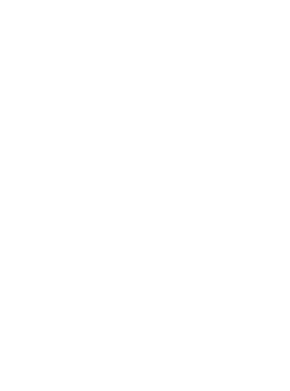
|
|
The global history of tattooing is that of a group of technical gestures, tools, pigments and figurative processes intended to mark the body. One tattoos to cure, venerate, deify, marginalize, subjugate, punish, magnify or demean the bearer of the tattoo. Since Prehistory, the tattoo has taken many forms (abstract, geometric, figurative) in contexts as varied as the treatment of osteoarthritis in the Upper Neolithic period, the cult of certain deities in ancient Egypt, or the sign of status in southern Siberia. However, one common trait emerges: marking the skin amounts to marking the subject’s inclusion in the social corpus. If the tattoo is not always immediately decipherable, it remains the trace of one’s relationship to oneself, of the individual to his group and of the tattooer to the tattooed.
This stamp, which dates from the 17th or 18th century, belonged for several generations to a family in Jerusalem, the Razzouks. The stamp is inked and then applied to the skin. The drawing thus obtained is followed and tattooed onto the skin using a needle; nowadays the needle is electric. These tattoos are performed on pilgrims; Copts, Syrians, Armenians, Abyssinians etc. as a concrete mark of their visit to Jerusalem. The theme represented is the Resurrection.
|
|
|
|
|
The street, the army, the jail

|

|

|
An ignominious mark, a sign of servitude or a loss of identity: for centuries, the tattoo fulfilled a marginalizing function. From the marking of slaves in ancient Rome and the stigmatization of criminals in imperial China to Colbert’s Code noir (black code) in France, which marked criminals and prostitutes, the tattoo, a tool to control bodies, signaled the dangerous individual in a definitively and immediately recognizable manner. Faced with these punitive practices, an intentional and offensive practice of tattooing, seen as a way of making a statement, developed in the 19th century.
From the merchant marine to the army, the tattoo attested to a road taken: the emblem of one’s regiment and the conscription date were immortalized on one’s skin. From the sidewalks to the gulags, the tattoo inscribed the encrypted vocabulary of a population determined to defyauthority and assert itself in a hostile milieu.
Succeeding the Navy doctors, criminologists—the Italian Cesare Lombroso (1835-1909), the French Alexandre Lacassagne (1843-1924) - and enthusiasts - the Russians Danzig Baldaev (1925-2005) and Sergei Vasiliev (born in 1936) - archived the motifs and motivations of the tattooed.
|
|
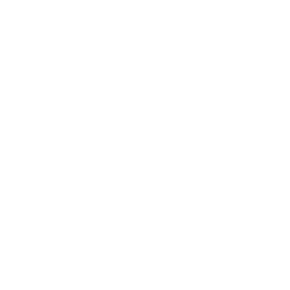
Portrait de femme Algérienne
|
|
|
|

|

|

|
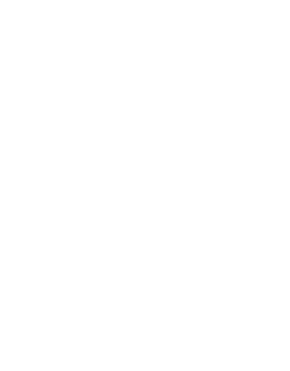
Le capitaine Costentenus tatoué par l'ordre de Yakoob-Beg
|
|
At the beginning of the 1830s in North America, sideshows set up their caravans around the big top of travelling circuses. They were the itinerant expression of the dime museum, where fairground attractions and anatomical phenomena were exhibited: the armless and legless man, the bearded lady and the person tattooed “from head to toe”. In these antechambers of the sensational, which often employed seasonal or itinerant tattooers, the tattooed performer moreover became a sword-swallower, an animal-tamer, a fireeater, a telepathist, a wrestler, a knifethrower…
Europe, which had always been fond of “curiosities” in which the marvellous, the farce and scientific illusions merged, welcomed these artists with open arms. Thanks to these performers, the spectacle of the tattooed body entered its golden age at the start of the 20th century.
These images from the Lacassagne Collection are anthropometric photographs carried out between 1920 and 1940 in the photographic laboratory of the Lyon prefecture of police under the responsibility of Doctor Jean Lacassagne (the son of Alexandre, the founder of modern forensic science).
|
|
|
|
|
|
If tattooing emerged as a form of artistic expression, it was thanks to the circulation
of practices between tattoo artists in Europe, Asia and North America, interested in technical and artistic innovations. In 1891, the invention of the electric tattoo machine by the American Samuel O’Reilly (?-1908) considerably increased the possibilities of tattooing and favoured its dissemination.
The effervescence of American tattooing owed a great deal to the observation of the Japanese irezumi: American and Japanese tattoo artists travelled from one shore of the Pacific to the other to trade their secrets. During the 20th century, the international dialogue between activists grew stronger. Following the model of tattooed Japanese who gathered in societies from 1902, tattoo artists got together in clubs, the first of which was created in 1953 in Bristol, in the United Kingdom. The first international tattooing convention, held in 1976 in Houston, in the United States, welcomed tattoo artists and tattooed from the entire planet. These meetings marked the beginning of the global reconstruction of tattooing.
Japan
Initially a punitive tool of the military authorities, the irezumi - from “ire,” “introduce” and “sumi,” “ink”- gradually moved into society. The archipelago had been familiar with decorative tattooing in the Ainu people, who lived in the north. Discreetly becoming ornamental in 17th-century society, the art of tattooing reached its apogee with the success of Suikoden (1757), the translation of the
Chinese novel Water Margin, the adventures of 108 bandits with tattoos on their bodies. In the early 19th century, a decadent period at the end of the Tokugawa shogunate and the golden age of woodblock print, a stunning tattooing style emerged that fascinated foreign visitors to Japan.
Traditional tattooing covers all or part of the body: this bodysuit could be total and reach as far as the wrists and ankles. Its iconography came from nature and Japanese folklore as well as the religious realm. Prohibited in 1872, tattooing continued to be practiced in the shadows until it became taboo in the 20th century, because it was associated with the yakuzas. Irezumi was subsequently discovered by foreigners. Exchanges in an ultra-connected modern world have opened the door to new generations keen to take part in a globalized tattoo culture.
This part of the exhibition presents: 1 « volume » tattooed by the tattoo artist Horiyoshi III
(japan) and 3 body-suits painted by the tattoo artists Sabado, Horimitsu et Shige (japan)
|
|
|
|
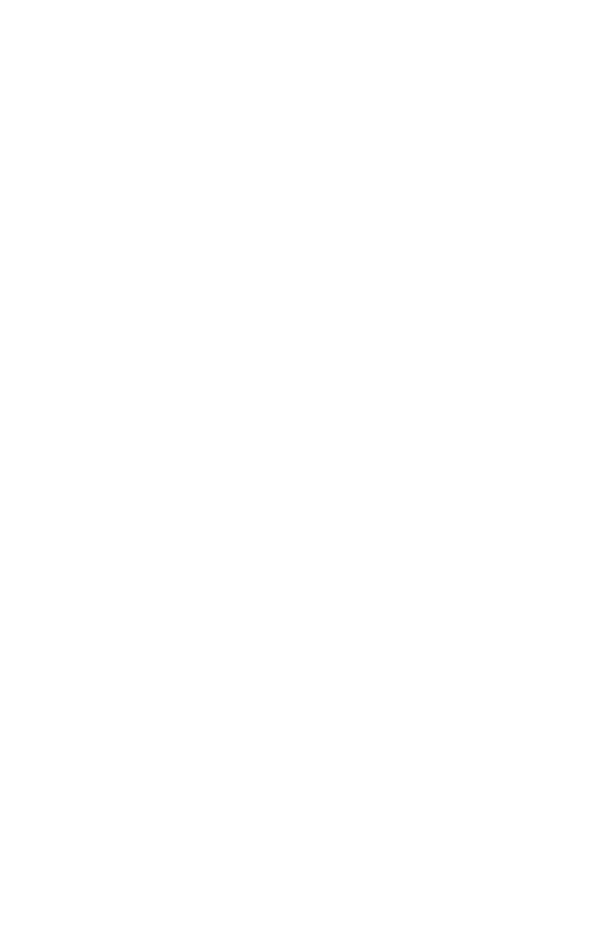
Traditional Japanese tattoo
|
|
|
|
|
|
If all the Amerindian tribes, from the Inuits to the Crees, practiced tattooing, their cultures did not go past the borders of the future reservations. After the colonization of the New World, American tattooing initially borrowed from a European pictorial heritage of traditional inspiration, before finding its own graphic particularities (bright colours, thick outlines) in the first part of the 20th century.
The birthplace of the revolutionary electric tattoo machine, the United States was also, thanks to the initiatives of the tattoo artists Sailor Jerry (1911-1973), then Ed Hardy (born in 1954), the first country to transform fascination with the Japanese ancestral art of tattooing into creative energy. These intercultural exchanges brought about the emergence of new schools of line and composition. This artistic impetus, succeeding
the spirit of research of the pioneers seeking new techniques, made tattooing evolve in the United States more rapidly than anywhere else in the West.
This part of the exhibition presents: 2 « volumes » tattooed by the tattoo artists Paul Booth and Grime (USA) and 4 body-suits painted by the tattoo artists Mike Davis, Freddy Corbin et Marcus Pacheco, Thomas Hooper (USA).
|
|
|
Copts, Armenians and Christians of the Holy Land. In the 19th century, tattooing was renewed and spread more widely across the continent: people showed their tattoos in hovels but also in the comfort of salons and at the court. In the 20th century, tattooing then joined the history of art: in the 1980s, the Swiss tattoo artist Félix Leu (1945-2002) rejected any distinction between academic art and popular art. Before him in London, Sutherland MacDonald (?-1926), nicknamed “the Michelangelo of tattooing”, had “tattoo artist” printed on his calling card in 1891.
This part of the exhibition presents: 3 « volumes » tattooed by the tattoo artists Tin-tin
(France), Filip Leu (Switzerland) et Xed LeHead (United Kingdom) and 6 body-suits painted by the tattoo artists Alex Binnie (United Kingdom), Luke Atkinson (Germany), Rudy Fritsch (Italy), Sabine Gaffron (Switzerland), Robert Hernandez (Spain) et Lynn Akura (United Kingdom).
III.MAKEOVER: REVIVAL OF TRADITIONAL TATTOOING
In Asia—apart from Japan—and Oceania, tattooing was very much abandoned from the 18th century under the combined effects of colonization, evangelization and changes in the societies themselves. With the exception of a very few islands, tattooing and the customs with which it was associated fell by the wayside. Starting in the 1980s, through travelling tattoo artists, indigenous practitioners met an international clientele and aspiring tattoo artists from every origin, clearly bent on reviving these ancient traditions. We are currently witnessing an unprecedented renewal of traditional tattooing. Globalized and very dynamic, the Samoan Islands are its centre of expertise and reference point.
New Zealand
In New Zealand (or Aotearoa, the country’s Maori name), the moko, a curvilinear and spiral tattoo, inspired by the crosiers of ferns, was the specific ornament of chiefs and warriors who could offer themselves the services of an expert tattooer (tohunga ta moko). As elsewhere in Polynesia, it underwent major transformations after the Europeans arrived. In the 20th century, it survived as facial tattoos on Maori women, as well as among gang members who reproduced its former warrior value of a “mask of defiance.” Today, it has been raised to the rank of taonga, or national treasure, and has inspired many Maori artists who have given it a second life and used its graphic particularities in their works.
This part of the exhibition presents: 1 « volume » tattooed by the tattoo artist Mark Kopua (New Zealand).
Samoa
In the Samoan Islands, tattooing was once a mandatory initiation rite. The pe’a (male tattoo) was required to obtain a wife and marked the bearer’s belonging to the village and the group of young men in charge of serving and protecting the chiefdom. In the 19th century, the practice in the archipelago underwent a certain number of changes, in the ritual as well as the tools used. It has remained nevertheless characterized by an exceptional continuity. Never having totally disappeared and still transmitted by the descendants of the tufuga ta tatou (ritual tattooing experts) of the pre-colonial period, this practice is very popular today, a popularity that goes well beyond the Samoan community. The guardians of its heritage, like the Samoan tattoo artist Loli Tikeli, or the Sulu’ape family, play a central role in the ethnic tattoo renewal phenomenon throughout the world.
Polynesia (Marquesas, Tahiti, Hawaii)
Although their iconographic traditions are clearly different one from another, these eastern Polynesian archipelagos have in common a history of tattooing marked by the missionary and colonial influence of the early 19th century. The reversal of the indigenous religious system and the creation of a foreign administration launched a transformation process of these iconographies, followed by the total abandonment of tattooing during the 19th century. Since the 1980s, a movement of revitalization of tattooing led by several generations of artists from Tahiti, the Marquesas islands and Hawaii, has helped to introduce Polynesian motifs into Western professional tattooing circles, and to have them massively adopted.
|
|
Borneo, Indonesia, Philippines
|
|
|
The renewal phenomenon specific to the tattoos of Borneo, the Philippines and Indonesia is principally attributable to professional tattoo artists who work in tattoo parlours in cities. However, they maintain a close link with their ethnic« group through frequent trips and meetings with the indigenous tattooed and tattooers.
This part of the exhibition presents: 2 « volume » tattooed by the tattoo artists Ernesto
Kalum (Malaisia), Leo Zulueta (USA) and 1 body-suits painted by the tattoo artist Elle Festin(USA)
|

|

|

|
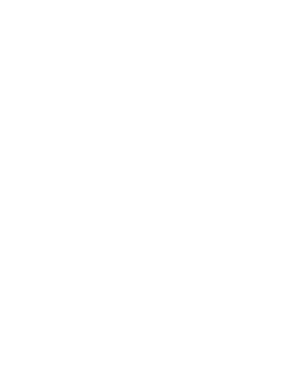
Yantra: Muay Thai boxer, Bangkok
|
|
Tattooing in Thailand - sak yan - is a complex system whose source is found in traditional animism, Brahmanism and
Buddhism. Its iconography is composed of diagrams, sacred formulas and images of deities and animals. The tattooed motifs – yantra - function as a talisman: their magic character, used to protect the bearer against bullets or illness, or to revitalize a career, is activated by the tattooer’s incantation - khru sak. Having fallen by the wayside after the long years of the influence of European missionaries exhorting, since the 17th century, men to cover their bodies, the sak yan was the object of an upsurge of faith in the population after the media coverage of celebrities, as Angelina Jolie, converted to its virtues in the 1990s.
This part of the exhibition presents: 1 body-suit painted by the tattoo artist Bump (Thaïland).
|
|
|
|
|
|
Markers of the artistic dynamism characterizing the evolution of contemporary tattooing, new schools are constantly emerging. In 1977, the tattoo artists Charlie Cartwright and Jack Rudy pushed back the limits of detail and shading. This specific technique of the realistic style of Los Angeles gangs draws its subjects from the chicana culture with its graphic vocabulary taken from American-Mexican learned and popular cultures. In China, from the 2000s, the practice of tattooing has re-emerged. Its practitioners find inspiration in both the pop culture of the entertainment industry with its flow of images (mangas, video games, cinema) and the vast heritage of Chinese historical iconography. In Europe, at the same time, abstraction and the graphic form have become subjects and materials to explore for a determined avant-garde.
China
The tattoo has had very diverse statuses and meanings in China. Five centuries before Jesus Christ, Confucian principles proscribed any intervention on the body. By turns punitive, tolerated, practiced by high society or disdained by dignitaries and scholars, tattooing was perpetuated by ethnic groups living outside the zones administered by the ruling power, like the Drungs and the Dais, who settled in the
Yunnan region. Despite this, tattooing was never really adopted in China. For the last 15 years, it has been spreading among the young generations for whom the individual gesture is important. On their body, alongside the grammar of Japanese tattooing and the American style can be found the iconographic symbols of a Chinese cultural
heroism, or a pop culture right out of the cinema, video games and mangas. Sweeping away the prohibitions of the Cultural Revolution, the tattoo juxtaposes the desires of a new generation: a past to be relearned and a future to be invented.
This part of the exhibition presents: 3 « volume » tattooed by the tattoo artists Dr Gao Bin (Taiwan) et Dong Dong (China).
Latino & Chicano
Chicano tattooing, otherwise called “fine line” or “black and grey”, can be found today on the skin of many tattooed people who, however, have never set foot on the streets of the Hispanic neighbourhoods of East Los Angeles, its nerve centre. Before it became popular, this style was formulated in the shadows of Californian cells, on the skin of convicts. In prisons, the tattoo artists and pintos (the authors of paños, or prison handkerchiefs) transformed into drawings a shared repertory of stories marked by the zoot-suiters’ philosophy of the 1940s: young Latino immigrants (pachucos) who distinguished themselves by their flamboyant suits.
The images are inspired by the art of the barrio (neighbourhood), the low-rider aesthetics (customized car), the art of wall painting, graffiti and its typographic particularities, the Catholic religious iconography, the memory of the heroes of the Mexican Revolution (1910-1911) and pre- Colombian history.
This part of the exhibition presents: 1 « volume » tattooed by the tattoo artist Jack Rudy (USA) and 1 body-suit painted by the tattoo artist Dr Lakra (Mexico).
|
|
|
Following the styles launched by the tattoo artists Alex Binnie, Curly and Xed LeHead, a new generation has brought tattooing into the third millennium. Two schools can be discerned nowadays: some tattoo artists reinterpret historical genres, preferring to the Japanese irezumi, or to the American old school, the wild vein of Russian gulag tattooing or the European “brut” line.
Others formulate aesthetics that are freed from current codes to explore the possibilities linked to graphic arts, in which typography, pixels, frames and diagrams make other motifs and compositions appear, going as far as abstraction. If the latter school does not directly base its Portrait of Maras, © Serie Maras, 2006. artistic philosophy on the legacy of the great master tattooers, the former remains impregnated by the past. However, both, for the last decade, have expressed an unshakable determination to renew tattooing and its codes to propose a new aesthetic.
|
|
|
The exhibition ends with the presentation of photographs of tattooed people, and one “volume” tattooed by the tattoo artist Yann Black (France), showing the work of 7 tattoo artists representing the new generation (Musa: Czech Republic; Kostek: France; Jeff: France; Guy le Tatooer: France; Jean-Luc Navette: France; Jonas Nyberg: Sweden; Yann Black: France). Over the last 10 years, the use of original forms of composition and lines has brought a new generation of tattooists into the spotlight. These artists strive to break away from a traditional spirit and to reinvent the vocabulary employed by their discipline.
COMMISSARIAT
- Curators : Anne & Julien are the creators and editors-in-chief of the quarterly art review HEY! modern art & pop culture (Editions Ankama/619). As authors and journalists specialising in alternative cultures for 25 years, they have published several books and produced documentaries on music and comic albums. They have published an artist's book through Éditions Rackham (Les Mondes
Promis). They are also exhibition curators (Musée de la Monnaie de Paris, Halle Saint Pierre, musée du quai Branly) and artists in the troupe that they founded; HEY! La CIE, with whom they transpose onto the stage the strange and fantastic world of HEY! (live 78 rpm mix on 1910 gramophones/new circus/neo-burlesque/hardcore butoh/singing/beatbox). As part of this work, HEY! La CIE appears at
the Claude Lévi-Strauss theatre to recount the exhibition "Tattoo" by means of 7 performances and 7 themed episodes examining key questions linked to the development of modern tattooing.
-Artistic consultant: Tin-Tin is the contemporary French tattoo artist with the greatest international reputation. For 3 decades, his artistic audacity and involvement in the world of tattooing have confirmed his unique position. He is the founder of SNAT, the French National Syndicate of Tattoo Artists, and the co-founder of the Mondial du Tatouage event (Paris), the next edition of which
takes place in March 2014.
-Scientific advisors: Pascal Bagot is a culture journalist working in the fields of music and tattooing, and currently specialising in tourism. In 2010, he wrote and co-produced the documentary "La voie de l'encre" dedicated to traditional Japanese tattooing.
-Sébastien Galliot is an anthropologist and graduate of the École des Hautes Études en Sciences Sociales. His doctoral thesis was entitled "Pe'a and malu: tattooing in Samoa (1722-2010). Techniques and culture in a Western Polynesian society in mutation". Since 2007, he has collaborated with the musée du quai Branly as an author, speaker and scientific advisor. His research fields are the mechanisms of ritual transmission, the phenomena of artification of tattooing and the iconographical corpus of Oceanian tattooing.
-Scenography: Réza Azard, museographic designer for the Guadalajara Guggenheim, in Mexico, and set designer for many shows held at the Musée du Quai Branly, such as PLANÈTE MÉTISSE, DOGON and LE SIÈCLE DU JAZZ.
EXHIBITION CATALOGUE
Catalogue : TATOUEURS, TATOUÉS coédité avec le musée du quai Branly et Actes Sud, 288 pages, 45€.
|
|
|
|
|
|
|


